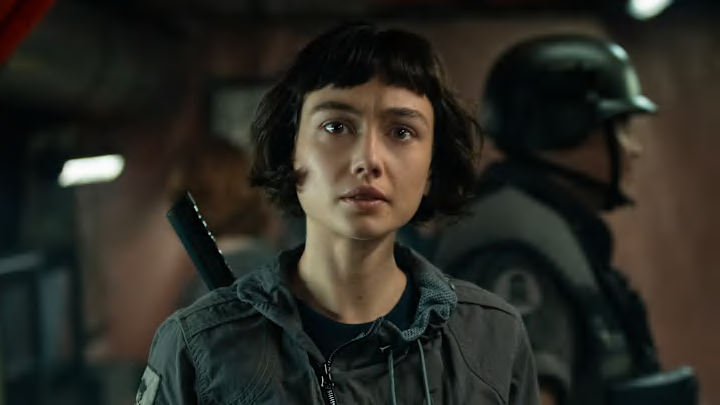Between sequels, spin-offs, prequels, and cross-overs, the Alien franchise's Xenomorph has become everything from an action figure to a bedroom poster to a lunch box and beyond. It is one of the most iconic creature designs in all of cinema, having directly inspired decades of imitations, copycats, and rip-offs.
But in doing so, the Xenomorph has lost its alien qualities. It is now something that is distinctly familiar to audiences, a creature whose entire backstory and inception have been extensively mapped out across multiple films, and whose appearance insights feelings of fondness rather than feelings of terror.
So how does Noah Hawley’s new series, Alien: Earth, deal with all of this baggage? In a number of very interesting ways.
The need to reinvent Alien
“My job in reinventing these classic films is to figure out, what are the series of feelings that the original makes me feel? And then, how do I make you feel those same feelings?" Hawley shared with The Hollywood Reporter. "The reality is I cannot make you feel the life cycle of this creature for the first time again because you know it so well, this evolution that it’s really four monsters and one. And it’s a parasite. Every step of the way is worse than the last.”

The showrunner went on to elaborate that an integral creative decision early on in the development of Alien: Earth was to introduce new, original creatures alongside the Xenomorph, in an attempt to recapture some of that unknown quality.
“The only way to make you feel that terrible discovery is to add new creatures,” Hawley added. “You don’t know how they reproduce or what they eat. So you get this dread that comes every time they’re on screen where you’re like, ‘I know something’s going to happen. I don’t know what it’s going to be.’ And then when it happens, it’s worse than you could have imagined.”
Though only the first two episodes of the series have been released, it’s safe to say that Hawley’s work thus far is living up to that standard, with the introduction of a couple of new creatures being both extremely memorable and extremely upsetting.
The history of Xenomorphs
When Alien first premiered in 1979, it took audiences completely by surprise in every regard. At that point in time, Ridley Scott was far from the established auteur he is today, and no one had ever heard of the term Xenomorph before.

As such, the spectacular marketing for the film did an excellent job of selling the atmosphere, tone, and dread of the final picture, but gave away exceedingly little in terms of the actual narrative.
This notion of preserving the surprises of the film were even taken to such extremes that the cast themselves were kept in the dark for the majority of the shoot; they weren’t allowed to see the sets until they were filming on them, they weren’t allowed to see the creature’s design, and many of them allege they weren’t even informed of what was going to happen in the scenes they were filming, most infamously in regards to the now-iconic chestburster sequence.
As a result of all of this secrecy, the potency of Alien was preserved in its entirety, and the film hit audiences like a freight train, delivering a theatrical experience so terrifying that the film remains a high-water mark for science-fiction horror to this very day.
However, with such monumental success, this aura of secrecy and mystique was doomed to fall by the wayside. Whereas audiences heading into that first film didn’t even know what a Xenomorph or a Facehugger was, much less what they looked like, audiences of today have arguably been overexposed to the titular creatures.
Stream the first two episodes of Alien: Earth right now on Hulu. New episodes will be released weekly, on both FX and Hulu, every Tuesday night.
More Alien: Earth:
To stay up to date on everything fantasy, science fiction, and WiC, follow our all-encompassing Facebook page and Twitter account, sign up for our exclusive newsletter, and check out our YouTube channel.
